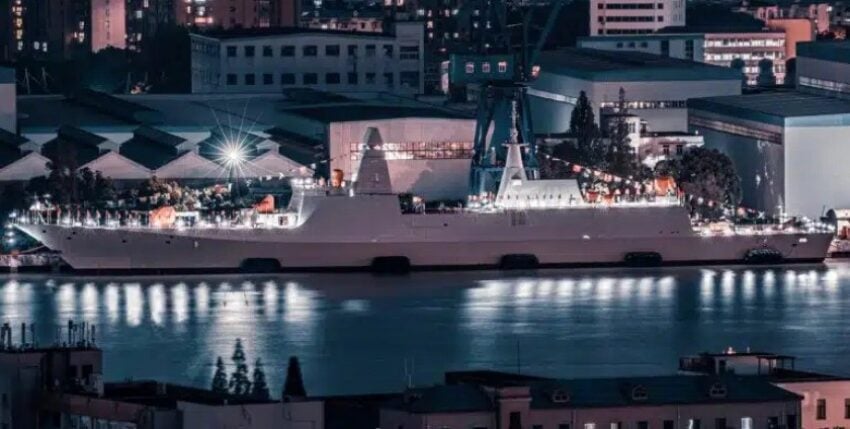Hudong-Zhonghua Shipbuilding in Shanghai launched the first guided missile frigate of the Jiangkai III class (Type 054B) at the end of August. With a length of 147 metres and a displacement of around 6,000 tonnes, the all-electric successor to the Jiangkai II class (Type 054A) is definitely a new design that is expected to reduce energy consumption and increase combat power despite being 50 percent larger. In contrast to the Renhai destroyer (Type 055), a rotating phased array radar system can be seen on the integrated mast superstructure, which will make the frigate comparable to modern Western frigates and destroyers in terms of its air defence capabilities. The new 100-millimetre gun also makes it significantly more powerful than its predecessor in terms of combat effectiveness. The other main armament appears little changed with a 32-fold vertical launch silo (HQ-16 anti-aircraft missile and/or Yu-8 torpedoes with rocket propellant kit) on the forecastle, plus two quadruple ramps for sea target missiles amidships, a CIWS weapon station in front of the bridge and a short-range air defence system on the hangar. Concentrated cargo.











2 responses
The AESA radar as a rotating unit is a difference, not a common feature with 055. On the latter, four permanently installed APAR units are integrated in the mast. On 054B the rotating element sits on the mast. The 100 mm gun was probably chosen less for the land target fire, but because the Chinese navy favoured the original French system over its Russian 76 mm counterpart due to a wider range of ammunition and better performance over the entire spectrum (including AA). The 100 mm system was used on 054 (non A) and older units, but there were reported problems with integration, which should now be resolved.
Mr Luck, thank you very much for your comment and the correction regarding the radar configuration on the 054B. I had noticed that too, but by then the post was already in orbit (let's see if anyone sees it!). Very pleased you got back to me. Your information on the gun selection also adds to the overall picture, which we can only ever build up bit by bit. Axel Stephenson, editor